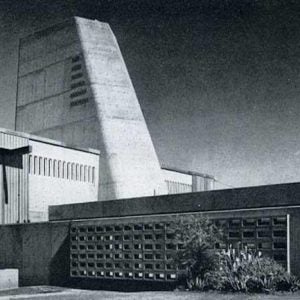 Belgium’s Council of Ministers on 7 September announced funding of €558 million ($646 million) for the Myrrha research infrastructure that is being developed at SCK•CEN’s premises in Mol.
Belgium’s Council of Ministers on 7 September announced funding of €558 million ($646 million) for the Myrrha research infrastructure that is being developed at SCK•CEN’s premises in Mol.
The Multi-purpose hYbrid Research Reactor for High-tech Applications (Myrrha) is the world’s first prototype of a nuclear reactor driven by a particle accelerator. It will be a 57MWt accelerator-driven system in which a proton accelerator will deliver a 600MeV proton beam to a liquid lead-bismuth spallation target that is coupled to a lead-bismuth cooled subcritical fast nuclear core.
In this Accelerator Driven System (ADS), the low-enriched uranium subcritical reactor core has insufficient fissile material to spontaneously maintain the fission chain reaction unless it is continuously fed by an external neutron source – the particle accelerator. Switching off the particle accelerator stops the chain reaction within a fraction of a second, and the reactor immediately shuts down.
The Belgian government approved construction of Myrrha in 2010 and undertook to contribute 40% of the €960 million investment required. The Myrrha project is envisioned as a partnership between Belgium, the European Union, the European Investment Bank and other partners, with around 70% of the funding coming from EU countries.
The recent government funding will enable SCK•CEN to build at Mol the first part of the particle accelerator and target facilities, known as the "Minerva" installation. SCK•CEN said the infrastructure, which will be put into service in 2026, will produce innovative radioisotopes and be used for fundamental and applied research on materials of the future. The funding will be provided over 2019-2038, to cover investment of the Minerva installation, studies and the development of the installation, and also the operating costs of the Minerva installation after 2027.
The Council of Ministers also approved the creation of the AISBL/IVZW Myrrha (international non-profit-making body), a legal status adapted to large-scale projects financed by several foreign states. This will encourage foreign partners that are interested in the Myrrha project and its applications.
These applications include development of technologies for processing radioactive waste using transmutation; production of new radioisotopes for the medical diagnosis and treatment; fundamental scientific research in nuclear physics, atomic physics, fundamental interactions, solid-state physics and nuclear medicine; development of advanced nuclear reactors cooled by lead-bismuth; testing materials and components for new nuclear fission and nuclear fusion reactors; conducting pioneering research in every aspect of nuclear energy; and training new generations of nuclear experts.
“Thanks to our government’s support, Myrrha has made great progress. I would like to thank everyone who assisted in obtaining this decision and who supported this project from the very beginning, in Belgium and abroad. The political, industrial and local authorities support also contributed to this success and will remain crucial to complete the project”, said Hamid Aït Abderrahim, Myrrha programme Director and Deputy Director-General of SCK•CEN.
Myrrha is intended to replace Belgium's ageing BR2 research reactor. It is part of the European Strategy Forum on Research Infrastructures, and is one of three new research reactors within the European Research area of experimental reactors, alongside the Jules Horowitz Reactor in France and the Pallas reactor in the Netherlands.
Photo: Artists impression of the the Multi-purpose hYbrid Research Reactor for High-tech Applications






